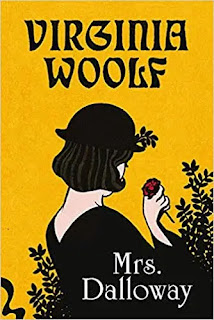Mrs. Dalloway as a modern novel
Modernism implies a break from the tradition, referring to some sort of discontinuity, treating characters as “thinking individuals, emphasizing the unconscious rather the outer, visible self. The substance of a literary work characterized as “modern” is formed by imagination and internal thought processes, and plot of such work becomes a collection of incidents and their effect on the individual. In Mrs. Dalloway, Virginia Woolf creates a modern novel that has also most of the features of modernism. Created from two short stories, Mrs. Dalloway describes a day in the life of its central character, Clarissa Dalloway on a June day in post-World War I England. According to Harold Bloom, in Clarissa Dalloway, personality is one of the main underlying themes of Virginia Woolf’s fiction.
Early in the novel Mrs. Dalloway, Clarissa Dalloway has a private searching moment when she examines her image in the mirror. There she sees a face -J-distinctively pointed, dart-like familiar face, composed and tense, that her mirror reflected “many million times”. This clearly focused image represents a unified and static self, the person she can produce wherever she needs a recognizable social mask.

Her social image conceals “incompatible” aspects of her personality which could be refracted into divergent and contradictory images. Each of the other characters sees only one of these incompatible aspects and takes this to be her total personality. Thus, as the novel progresses, the early static image in the mirror gives way to a series of shifting and contradictory views of Mrs. Dalloway, and her identity expands to encompass all the divergent images while remaining unencompassed by them.
In Clarissa Dalloway’s preparations to host a party that evening, Virginia Woolf records all her thoughts, remembrances, and impressions, as well as the thoughts of other characters. There is no actual story, no plots or sub-plots, no action in the traditional sense. Nothing actually “happens” in this novel, apart from the “myriad of impressions” created by Virginia Woolf’s new style of writing, as opposed to the traditional one. Examine for a moment an ordinary mind on an ordinary day”, she says in her essay, Modern Fiction: “The mind receives a myriad impressions-trivial, fantastic, evanescent, or engraved with the sharpest of steel. …Life is not a series of gig lamps symmetrically arranged, life is a luminous halo, a semi-transparent envelope surrounding us from the beginning of consciousness to the end”.